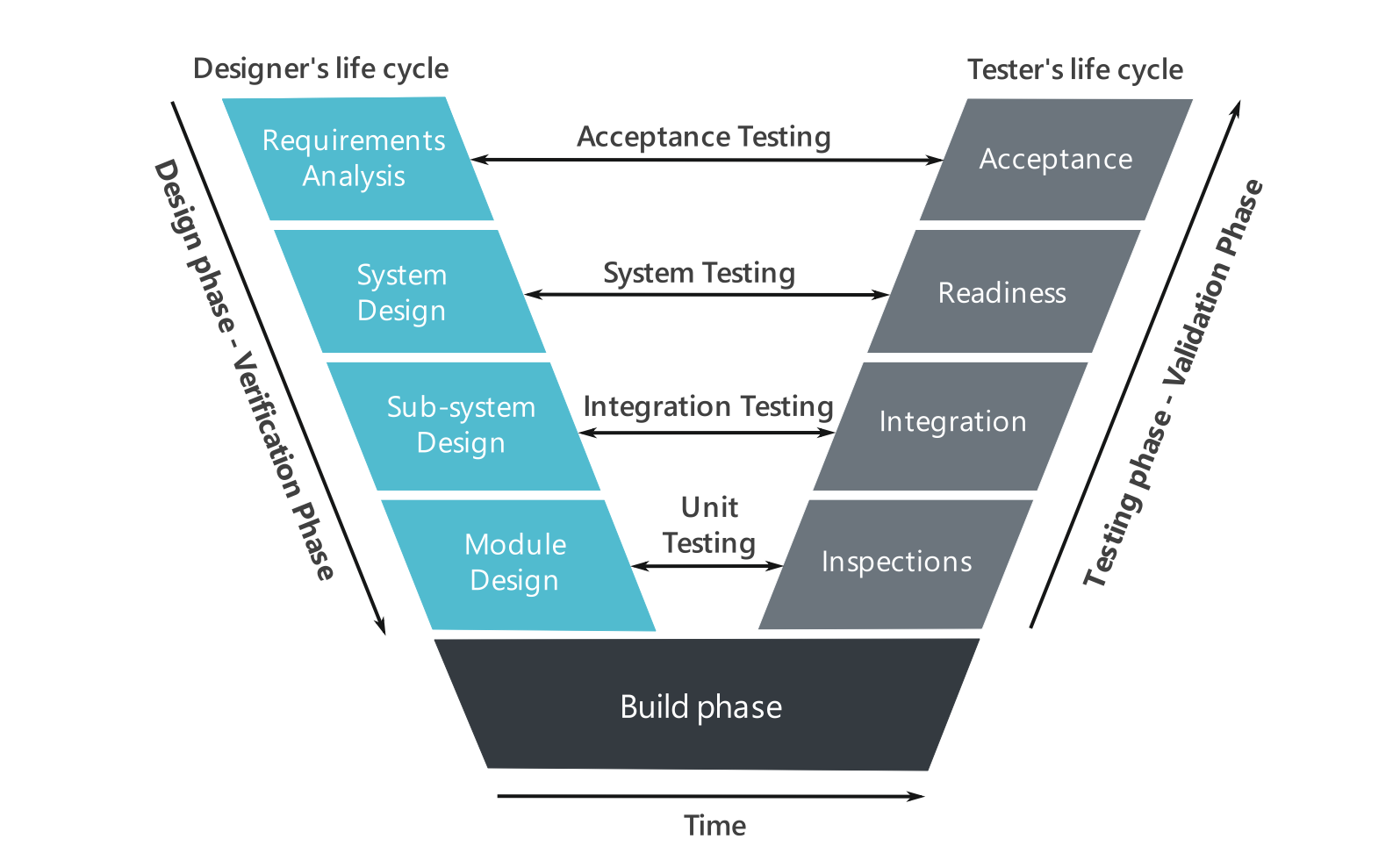System engineering is a complex and multidisciplinary field that requires the collaboration of various roles to ensure the successful development, implementation, and maintenance of systems. The roles in System Engineering play a critical part in different aspects of the system engineering process, bringing unique expertise and responsibilities to the table. In this blog, we will explore the diverse roles involved in system engineering, highlighting their key responsibilities and contributions. By understanding the distinct roles within system engineering, organizations can effectively allocate resources, foster collaboration, and achieve successful outcomes.
Table of Contents
- Systems Engineering Manager
- Systems Engineer
- Requirements Manager
- Systems Integration Manager
- Operational Integration Manager
- Systems Architecture Manager
- Systems Interface Manager
- V&V Manager
- RAM Manager or Engineer
- Human Factors Integration Manager
- Configuration Manager
- Test and Evaluation Manager
- System Safety Manager
- Risk Manager
- Quality Assurance Manager
- Training and Documentation Manager
- Roles in System Engineering Wrap Up
Systems Engineering Manager
The Systems Engineering Manager serves as a key figure in overseeing the entire system engineering process. Their responsibilities include identifying management requirements, allocating resources, assigning responsibilities to team members, supporting project managers, and ensuring effective controls and measures are implemented throughout the project lifecycle. By tailoring system engineering principles and coordinating interface management activities, they contribute to the seamless integration of various project work streams.
Tasks commonly performed by a Systems Engineering Manager may include:
- Develop the project Systems Engineering Management plan
- Identifying management requirements for system engineering projects.
- Allocating resources effectively to support project needs.
- Assigning responsibilities to team members based on their skills and expertise.
- Supporting project managers by providing guidance and oversight.
- Ensuring effective controls and measures are implemented throughout the project lifecycle.
- Tailoring system engineering principles to suit project requirements.
- Coordinating interface management activities to facilitate seamless integration of project work streams.
- Monitoring project progress and addressing any issues that may arise.
- Collaborating with other system engineering functions to achieve project goals.
- Ensuring that project deliverables meet defined requirements and stakeholder expectations.
- Leading and managing a team of system engineering professionals to drive project success.
- Communicating with key stakeholders to provide updates on project status and address any concerns.
- Developing and implementing strategies to optimize system engineering processes and improve project outcomes.
- Conducting regular reviews and assessments to ensure project milestones are met on time and within budget.
- Adhering to quality standards and best practices in system engineering to deliver high-quality results.
Systems Engineer
Of all roles in System Engineering, the Systems Engineer plays a pivotal role in the execution and management of system engineering processes within a project or organization. Their primary responsibilities encompass analyzing, designing, integrating, and optimizing complex systems to meet project objectives efficiently. Here’s an overview of tasks commonly performed by a Systems Engineer:
- Develop and refine the Systems Engineering Management plan for the project.
- Identify and document management requirements pertinent to system engineering projects.
- Allocate resources judiciously to support project needs while optimizing efficiency.
- Assign responsibilities to team members based on their skillsets and proficiencies.
- Provide guidance and oversight to project managers, offering insights into system engineering aspects.
- Implement robust controls and measures throughout the project lifecycle to ensure quality and adherence to requirements.
- Customize system engineering principles to align with specific project needs and constraints.
- Coordinate interface management activities to foster smooth integration among various project work streams.
- Monitor project progress vigilantly, promptly addressing any emerging issues or bottlenecks.
- Collaborate closely with other system engineering functions to synergize efforts and achieve project objectives.
- Ensure that project deliverables consistently meet defined requirements and stakeholder expectations.
- Lead and mentor a team of system engineering professionals, fostering a culture of excellence and collaboration.
- Maintain transparent communication with key stakeholders, providing regular updates on project status and addressing concerns proactively.
- Develop and implement strategies aimed at optimizing system engineering processes and enhancing project outcomes.
- Conduct periodic reviews and assessments to gauge progress against milestones, ensuring timely completion within budgetary constraints.
- Uphold stringent adherence to quality standards and best practices in system engineering to deliver superior results consistently.
Requirements Manager
The Requirements Manager is responsible for identifying stakeholders, defining requirements management needs, and developing a comprehensive requirements management plan. They facilitate requirements definition workshops, elicit requirements, maintain a requirements database, and monitor requirements allocation and traceability. By coordinating activities with other system engineering management functions, the Requirements Manager ensures that the project’s requirements are effectively captured, communicated, and met.
Tasks commonly performed by a Requirements Manager may include:
- Identifying stakeholders involved in system engineering projects.
- Defining requirements management needs and objectives.
- Developing a comprehensive requirements management plan.
- Facilitating requirements definition workshops to gather stakeholders’ inputs.
- Eliciting, documenting, and prioritizing requirements.
- Maintaining a requirements database to ensure traceability and transparency.
- Monitoring requirements allocation and ensuring traceability to project deliverables.
- Coordinating with other system engineering management functions to align requirements with project goals.
- Analyzing and validating requirements to ensure they are clear, achievable, and measurable.
- Communicating effectively with stakeholders to ensure requirements are understood and agreed upon.
- Providing guidance to project teams on managing and documenting changes to requirements.
- Conducting periodic reviews to verify that requirements are being met and adjusted as needed.
- Participating in risk management activities to identify and mitigate any potential impacts on requirements.
- Collaborating with system architects and engineers to ensure requirements are successfully integrated into the system design.
- Contributing to the overall success of the project by ensuring that requirements drive the development of a system that meets user needs and expectations.
Systems Integration Manager
The Systems Integration Manager focuses on integrating different subsystems, components, and interfaces within the system. This role is typically on the right side of the v diagram, and is one of the many important roles in System Engineering. They establish and maintain a systems integration plan, execute integration tasks, and coordinate activities with other system engineering functions. Their role is crucial in ensuring that all system elements work together harmoniously, enabling the system to function as a unified whole.
Tasks commonly performed by a Systems Integration Manager may include:
- Establishing and maintaining a systems integration plan to outline the integration approach and timeline.
- Coordinating with different subsystems, components, and interfaces to ensure seamless integration.
- Executing integration tasks according to the defined plan and schedule.
- Collaborating with other system engineering functions to align integration activities with overall project goals.
- Identifying and resolving integration issues and conflicts that may arise during the integration process.
- Conducting integration testing to validate that all system elements work together as intended.
- Documenting integration procedures and outcomes for reference and future maintenance.
- Ensuring that integration activities comply with relevant standards and regulations.
- Participating in design reviews to provide input on integration considerations early in the project lifecycle.
- Supporting system validation and verification activities to ensure that integrated systems meet performance requirements.
- Communicating with stakeholders to provide updates on integration progress and address any concerns.
- Providing guidance and support to the project team to achieve successful system integration.
- Managing configuration control to track changes and updates to integrated systems.
- Monitoring potential risks and dependencies that may impact system integration and proposing mitigation strategies.
Operational Integration Manager
The Operational Integration Manager oversees the integration of the system into its operational environment. They prepare operational readiness plans, coordinate training and competency development, manage change, and lead stakeholder management activities. By addressing operational considerations and ensuring a smooth transition from development to operations, the Operational Integration Manager plays a vital role in the system’s successful implementation and utilization.
Tasks commonly performed by an Operational Integration Manager may include:
- Developing operational readiness plans to prepare the system for deployment and use in its operational environment.
- Coordinating training and competency development programs to ensure stakeholders are proficient in using the system.
- Managing change within the operational environment and ensuring stakeholders are informed and engaged throughout the process.
- Leading stakeholder management activities to address concerns and gather feedback on operational integration.
- Collaborating with system users and operators to understand operational requirements and streamline processes.
- Ensuring a smooth transition from system development to operational deployment to minimize disruptions.
- Identifying operational risks and developing mitigation strategies to address potential issues.
- Monitoring system performance in the operational environment and implementing improvements as needed.
- Documenting operational procedures and best practices for system use and maintenance.
- Conducting post-implementation reviews to evaluate the effectiveness of operational integration efforts.
- Communicating with key stakeholders to provide updates on operational integration progress and seek input for enhancements.
- Collaborating with maintenance and support teams to ensure the system remains operational and meets user needs over time.
- Participating in continuous improvement initiatives to enhance operational efficiency and effectiveness.
Systems Architecture Manager
The Systems Architecture Manager is responsible for identifying suitable systems architecture models and viewpoints based on the project’s scope and complexity. They establish and maintain a systems architecture management plan, select appropriate tools, and execute tasks related to systems architecture management. By providing a high-level view of the system’s structure and components, the Systems Architecture Manager enables effective decision-making and alignment with the project’s goals.
Tasks commonly performed by a Systems Architecture Manager may include:
- Identifying suitable systems architecture models and viewpoints based on project scope and complexity.
- Establishing and maintaining a systems architecture management plan to guide architecture development.
- Selecting appropriate tools and methodologies for designing and documenting system architecture.
- Collaborating with system engineering teams to ensure alignment between architecture and project objectives.
- Developing high-level system architecture diagrams and documentation to communicate system structure.
- Analyzing trade-offs and making decisions on architectural design choices to meet project requirements.
- Conducting architecture reviews with stakeholders to validate design decisions and ensure alignment with business objectives.
- Evaluating new technologies and trends to incorporate innovative solutions into the system architecture.
- Defining interfaces between system components to ensure compatibility and interoperability.
- Participating in system design reviews to provide input on architectural considerations.
- Ensuring that system architecture aligns with standards, best practices, and regulatory requirements.
- Collaborating with cross-functional teams to address architecture-related issues and dependencies.
- Conducting impact assessments of proposed changes to the system architecture and recommending adjustments as needed.
- Leading architecture governance activities to oversee adherence to architectural principles and strategies.
- Providing guidance and mentorship to architecture team members to foster skill development and knowledge sharing.
Systems Interface Manager
The Systems Interface Manager identifies and manages the interface requirements between various system components. They develop interface control documents, establish a systems interface plan, and ensure proper coordination with other system engineering activities. By addressing interface hazards and risks, the Systems Interface Manager enhances system safety and facilitates seamless integration between subsystems.
Tasks commonly performed by a Systems Interface Manager may include:
- Identifying and managing interface requirements between various system components.
- Developing interface control documents to define interface specifications and guidelines.
- Establishing a systems interface plan to coordinate interface development and integration.
- Collaborating with system engineering teams to ensure interfaces are designed to meet project requirements.
- Facilitating communication between different subsystems to address interface challenges and dependencies.
- Conducting interface reviews and assessments to verify compatibility and alignment with system objectives.
- Identifying interface hazards and risks that may impact system performance or safety.
- Documenting interface agreements and configurations to maintain traceability and transparency.
- Working with stakeholders to resolve interface conflicts and ensure seamless integration of subsystems.
- Monitoring interface changes and updates to assess their impact on overall system behavior.
- Participating in design reviews to provide input on interface considerations and requirements.
- Collaborating with external partners or vendors to address interface integration across organizational boundaries.
- Ensuring compliance with interface standards, protocols, and industry best practices.
- Providing guidance and support to teams working on interface development and integration tasks.
- Contributing to system validation and verification activities to test interface functionality and performance.
V&V Manager
The V&V (Verification and Validation) Manager is responsible for identifying V&V requirements, developing a V&V management plan, and executing V&V tasks and activities. They ensure that the system meets specified standards, performance criteria, and user expectations. By employing appropriate methods and tools, the V&V Manager validates the system’s functionality, reliability, and compliance with established requirements.
Tasks commonly performed by a V&V (Verification and Validation) Manager may include:
- Identifying V&V requirements based on project objectives and stakeholder needs.
- Developing a V&V management plan outlining verification and validation activities.
- Establishing criteria for evaluating system performance and compliance with requirements.
- Selecting appropriate methods and tools for conducting V&V activities, such as testing, analysis, and simulation.
- Leading V&V teams in executing test plans and protocols to verify system functionality.
- Coordinating with system designers and engineers to ensure V&V activities align with design specifications.
- Analyzing test results and data to validate system performance against defined criteria.
- Documenting V&V findings, issues, and recommendations for corrective actions.
- Ensuring that V&V activities are conducted in accordance with relevant standards and regulations.
- Collaborating with stakeholders to communicate V&V results, progress, and risk assessments.
- Participating in risk management activities to identify potential V&V challenges and mitigation strategies.
- Providing input on system requirements to ensure they are verifiable and testable.
- Conducting peer reviews and audits to validate V&V processes and outcomes.
- Monitoring V&V progress and milestones to ensure timely completion of activities.
- Supporting system certification and compliance efforts by providing evidence of V&V activities and results.
RAM Manager or Engineer
The RAM Manager, tasked with pinpointing RAM necessities, actively crafts and puts into action a RAM management strategy. This role is deeply intertwined with executing RAM analysis tasks. Collaborating intimately with the system safety manager, they play a crucial part in recognising potential hazards. They also aid in the assembly of safety-oriented logs and registers. Taking into account reliability, availability, and maintainability, the RAM Manager significantly enhances the system’s performance and usability.
The RAM Manager also partakes in evaluating risk and managing failures. They consistently monitor system performance metrics to detect possible issues. Furthermore, they provide key recommendations to boost the effectiveness of system maintenance strategies. They even adopt pro-active preventative measures to avert potential system failures. Moreover, they lend their expertise to enrich training programs and documentation, helping everyone understand the ins and outs of RAM. Their role divulges a much-needed perspective, reinforcing RAM’s gatekeeping position in systems engineering.
Tasks commonly performed by a RAM (Reliability, Availability, Maintainability) Manager or Engineer may include:
- Identifying RAM requirements for the system based on operational needs and performance objectives.
- Developing and implementing a RAM management strategy to optimize system performance and reliability.
- Conducting RAM analysis tasks to assess reliability, availability, and maintainability considerations.
- Collaborating closely with the system safety manager to identify potential hazards and risks.
- Participating in the development of safety-oriented logs and registers to track RAM-related data.
- Evaluating system reliability, availability, and maintainability metrics to improve system performance.
- Assessing risk factors and managing failures to enhance system resilience and uptime.
- Monitoring system performance metrics to detect potential issues and address them proactively.
- Providing recommendations to enhance system maintenance strategies and prevent failures.
- Contributing to the development of training programs and documentation to educate stakeholders on RAM considerations.
- Leveraging expertise in RAM principles to optimize system design and performance.
- Assisting in the implementation of preventive measures to mitigate potential system failures.
- Collaborating with cross-functional teams to address RAM-related challenges and support continuous improvement initiatives.
- Participating in system testing and validation activities to ensure RAM requirements are met.
- Playing a critical role in ensuring system reliability, availability, and maintainability to support operational needs and stakeholder requirements.
Human Factors Integration Manager
The Human Factors Integration Manager spots and tackles human and ergonomic elements in system design. They map out and carry out activities related to Human Factors (HF), guaranteeing the system suits its users’ needs and capabilities. They weigh up the context of HF stipulations, plot HF activities and review design solutions through an HF lens. Leveraging human-centred design principles, the Manager boosts usability, safety, and user satisfaction as a whole.
Tasks commonly performed by a Human Factors Integration Manager may include:
- Identifying human and ergonomic elements that impact system design and usability.
- Mapping out activities related to Human Factors (HF) to ensure the system meets user needs and capabilities.
- Analyzing the context of HF requirements and integrating them into system design processes.
- Conducting user research to understand user preferences, behaviors, and limitations.
- Collaborating with design teams to implement human-centered design principles in system development.
- Evaluating design solutions through an HF lens to optimize usability, safety, and user satisfaction.
- Incorporating feedback from usability testing and user studies to improve system design.
- Conducting HF assessments to identify potential human errors and improve system operability.
- Developing design guidelines and recommendations based on HF best practices.
- Monitoring industry trends and best practices in HF to inform system design decisions.
- Providing input on interface design, control placement, and system layout to enhance user experience.
- Collaborating with engineers, designers, and stakeholders to address HF considerations throughout the design process.
- Ensuring compliance with ergonomic standards and regulations in system development.
- Participating in design reviews to provide HF insights and recommendations for improvements.
- Contributing to the overall success of the system by optimizing user interfaces, workflows, and feedback mechanisms based on human factors principles.
Configuration Manager
The Configuration Manager identifies configuration management requirements and establishes a configuration management plan. They select appropriate tools, execute configuration management tasks, and coordinate activities related to managing the system’s configuration. By maintaining control over changes and ensuring consistency across system components, the Configuration Manager enables effective configuration management throughout the system’s lifecycle.
Tasks commonly performed by a Configuration Manager may include:
- Identifying configuration management requirements for the system development process.
- Establishing a configuration management plan to define the approach and processes for managing system configurations.
- Selecting appropriate tools and software for configuration management activities.
- Defining configuration items and establishing baselines for system components.
- Conducting configuration audits to ensure that system components align with specifications and requirements.
- Tracking changes to system configurations and managing version control.
- Coordinating with stakeholders to review and approve configuration changes.
- Implementing configuration control procedures to manage changes effectively.
- Ensuring consistency and integrity across system configurations throughout the project lifecycle.
- Providing configuration status reports and documentation to stakeholders and project teams.
- Participating in change control boards to evaluate and approve proposed configuration changes.
- Managing configuration documentation, including technical specifications and design documentation.
- Conducting configuration reviews and assessments to verify compliance with configuration management processes.
- Collaborating with system engineers and architects to ensure configuration management aligns with system design requirements.
- Supporting system testing and validation activities by providing accurate configuration data and documentation.
Test and Evaluation Manager
The Test and Evaluation Manager is responsible for planning, coordinating, and executing testing activities to validate and verify the performance, functionality, and compliance of systems with requirements and specifications. They oversee the testing process, manage test resources, and ensure that test activities are conducted efficiently and effectively to support the system’s development and implementation phases.
Activities commonly performed by a Test and Evaluation Manager may include:
- Developing test plans and strategies based on system requirements and project objectives.
- Identifying testing needs, resources, and timelines to support project schedules.
- Defining test scenarios, cases, and procedures for system functionality and performance testing.
- Coordinating with system engineers and stakeholders to align testing activities with design specifications.
- Managing test environments and equipment to ensure proper functioning and availability.
- Conducting test readiness reviews to verify that test objectives and criteria are clearly defined.
- Executing tests, capturing and analyzing test results, and documenting findings for further analysis.
- Collaborating with quality assurance teams to address defects and issues identified during testing.
- Providing test progress reports and updates to project stakeholders and management.
- Participating in system validation and verification activities to ensure that test results meet project requirements.
- Conducting regression testing to verify system performance after modifications or updates.
- Implementing test automation tools and techniques to streamline testing processes and improve efficiency.
- Evaluating and recommending improvements to testing methodologies, tools, and processes.
- Ensuring compliance with testing standards, best practices, and industry regulations.
- Contributing to the overall success of system engineering projects by validating system functionality, performance, and quality through comprehensive testing and evaluation.

System Safety Manager
The System Safety Manager is responsible for identifying, assessing, and managing safety risks associated with system design, development, and operation. They work to ensure that safety requirements are integrated into the system engineering process to minimize hazards, mitigate risks, and enhance overall system safety.
Activities commonly performed by a System Safety Manager may include:
- Conducting safety analyses, including hazard analysis and risk assessments, to identify potential safety issues and hazards.
- Developing safety plans and procedures to address safety concerns throughout the system lifecycle.
- Collaborating with system engineers and designers to implement safety measures and controls in system design.
- Participating in design reviews to identify safety-critical design elements and propose safety enhancements.
- Tracking and managing safety-related requirements to ensure compliance with safety standards and regulations.
- Leading safety reviews and audits to evaluate system safety performance and identify improvement opportunities.
- Conducting safety testing and verification activities to validate safety controls and measures.
- Documenting safety procedures, incident reports, and safety-related documentation for reference and analysis.
- Monitoring and addressing safety concerns raised by stakeholders, users, or regulatory agencies.
- Providing safety training and guidance to system operators and maintenance personnel.
- Participating in incident investigations and root cause analysis to identify safety issues and recommend corrective actions.
- Coordinating with system architects and engineers to address safety considerations in system design and development.
- Ensuring that safety risks are communicated effectively to project teams and stakeholders.
- Staying informed about safety regulations, industry standards, and best practices to enhance system safety.
- Contributing to the overall success of system engineering projects by promoting a safety-focused approach and ensuring that system safety requirements are met effectively.
Risk Manager
The Risk Manager is responsible for identifying, assessing, managing, and mitigating risks throughout the system engineering process. They work to anticipate potential issues, evaluate their potential impact on project objectives, and develop strategies to address and minimize risks effectively.
Activities commonly performed by a Risk Manager may include:
- Conducting risk assessments to identify potential risks and vulnerabilities that may affect project outcomes.
- Developing a risk management plan to outline strategies for identifying, analyzing, and responding to risks.
- Collaborating with project teams to identify risk triggers, events, and potential consequences.
- Assessing the likelihood and impact of identified risks to prioritize risk mitigation efforts.
- Developing risk mitigation strategies, response plans, and contingency measures to address potential impacts.
- Monitoring and tracking risks throughout the project lifecycle to ensure timely intervention and effective risk management.
- Communicating risk assessments and updates to project stakeholders, team members, and management.
- Implementing risk assessment tools and techniques to quantify and prioritize risks.
- Facilitating risk workshops and meetings to engage stakeholders in risk identification and management processes.
- Providing recommendations for risk mitigation actions and risk treatment options.
- Conducting regular risk reviews and assessments to evaluate the effectiveness of risk management strategies.
- Contributing to decision-making processes by providing risk analysis and recommendations.
- Ensuring compliance with risk management standards, regulatory requirements, and best practices.
- Collaborating with project managers and team leads to incorporate risk management into project planning and execution.
- Contributing to the success of system engineering projects by proactively managing risks, minimizing potential impacts, and enhancing project resilience.
Quality Assurance Manager
The Quality Assurance Manager is responsible for ensuring that system engineering processes and deliverables meet the highest quality standards and comply with regulatory requirements. They oversee quality control measures, implement quality assurance processes, and monitor adherence to quality guidelines throughout the system development lifecycle.
Activities commonly performed by a Quality Assurance Manager may include:
- Developing and implementing a quality assurance plan to establish quality objectives and strategies for system engineering projects.
- Establishing quality standards, procedures, and guidelines to ensure consistency and quality in project deliverables.
- Conducting quality audits and reviews to assess compliance with quality requirements and industry standards.
- Collaborating with project teams to define quality metrics, key performance indicators, and quality control checkpoints.
- Monitoring and evaluating quality performance metrics to track project progress and identify areas for improvement.
- Providing guidance and training to project teams on quality standards, best practices, and quality assurance processes.
- Facilitating quality assurance activities such as inspections, testing, and documentation reviews to verify compliance with requirements.
- Participating in design reviews and validation activities to ensure that quality objectives are met at each stage of the project.
- Implementing corrective and preventive actions to address quality issues, deviations, and non-conformities.
- Documenting quality procedures, findings, and recommendations for continuous improvement and knowledge sharing.
- Collaborating with external auditors, customers, and stakeholders to address quality concerns and ensure customer satisfaction.
- Conducting root cause analysis and problem-solving activities to address quality-related issues and prevent reoccurrence.
- Ensuring that quality assurance processes align with system engineering methodologies, best practices, and industry standards.
- Providing quality status reports, updates, and recommendations to project stakeholders, management, and regulatory authorities.
- Contributing to the success of system engineering projects by promoting a culture of quality excellence, continuous improvement, and adherence to quality principles throughout the project lifecycle.
Training and Documentation Manager
The Training and Documentation Manager is responsible for developing training programs and creating documentation to educate system users, stakeholders, and support teams on system operation, maintenance, and best practices. They ensure that users are proficient in utilizing the system effectively and efficiently, enhancing system usability and knowledge dissemination.
Activities commonly performed by a Training and Documentation Manager may include:
- Developing training programs and materials to address the needs of system users, administrators, and support staff.
- Creating user manuals, guides, tutorials, and support documents to provide instructions and guidance on system operation.
- Conducting training needs assessments to identify competency gaps and training requirements.
- Designing and delivering training sessions, workshops, and webinars to educate system users on key features and functionalities.
- Collaborating with subject matter experts, system developers, and stakeholders to gather content for training materials.
- Implementing learning management systems and online training platforms to facilitate remote learning and user access.
- Evaluating training effectiveness and user satisfaction through surveys, assessments, and feedback mechanisms.
- Updating and revising training materials and documentation to reflect system updates, enhancements, and changes.
- Providing user support and addressing training-related queries and issues through helpdesk services and training support.
- Conducting on-the-job training and mentoring sessions to assist users in applying system knowledge to their tasks.
- Maintaining a centralized repository of training materials and documentation for easy access and retrieval.
- Ensuring compliance with training standards, industry regulations, and best practices in educational technology and instructional design.
- Collaborating with system developers to incorporate user feedback and training insights into system design improvements.
- Organizing training events, workshops, and seminars to foster user engagement and continuous learning.
- Contributing to the success of system implementation by ensuring that users are equipped with the necessary knowledge and skills to effectively utilize the system and achieve their operational goals.
Roles in System Engineering Wrap Up
The roles in System Engineering and System engineering involves a diverse range of roles, each contributing unique expertise and responsibilities to ensure the successful development, implementation, and maintenance of systems. From the Systems Engineering Manager overseeing the entire process to the Configuration Manager managing system configurations, each role plays a crucial part in achieving project goals.
By understanding the distinct responsibilities and contributions of these roles in System Engineering, organizations can effectively allocate resources, foster collaboration, and deliver systems that meet user requirements, safety standards, and performance criteria. By embracing a multidisciplinary approach and leveraging the expertise of each role, system engineering endeavors can thrive and lead to successful outcomes.







